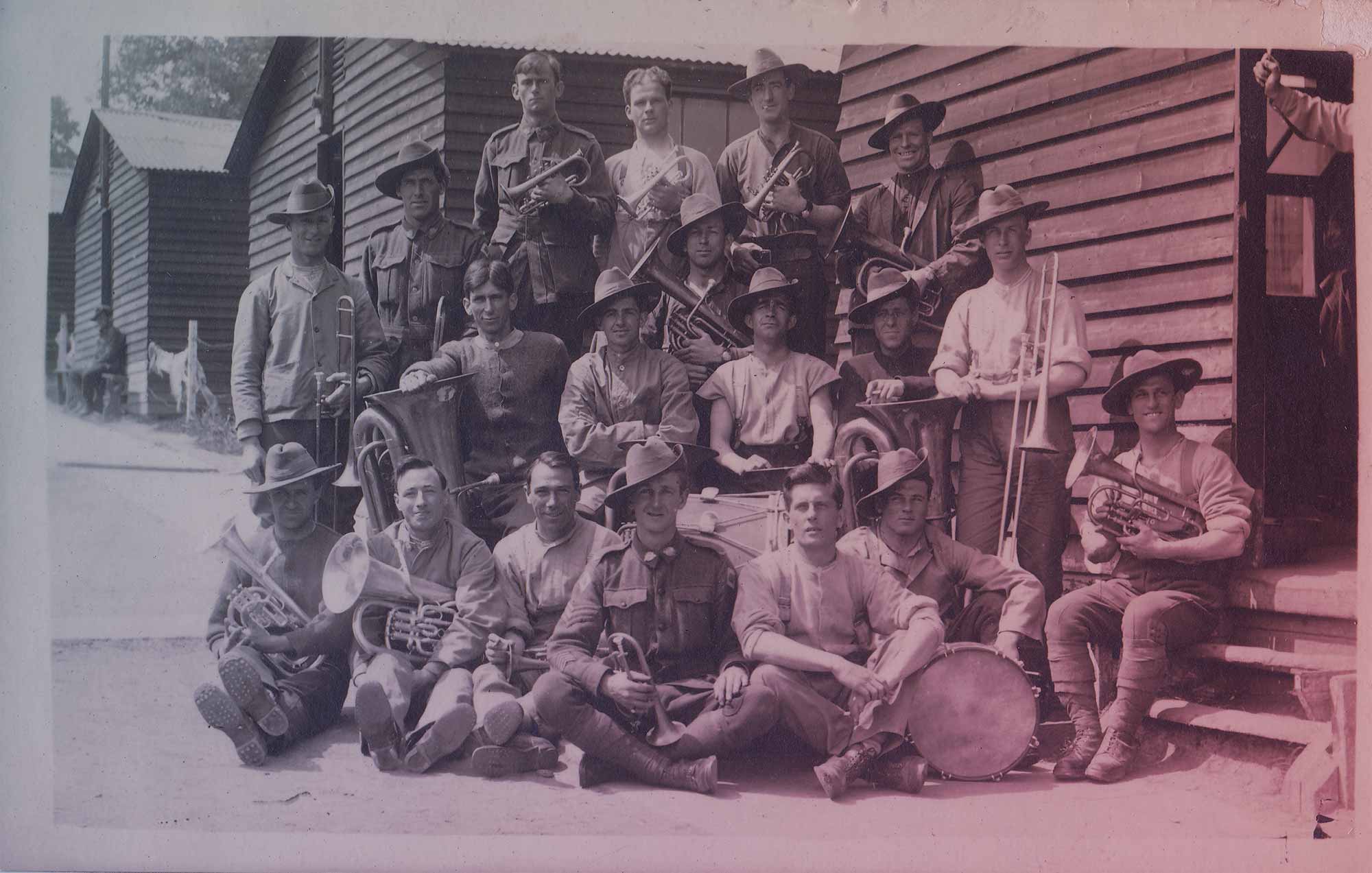From the lowest point of view, a few drums and fifes in a battalion are worth five extra miles on a route-march—quite apart from the fact that they swing the battalion back to quarters composed and happy in its mind no matter how wet and tired its body may be.
— The soul of a battalion speech, Rudyard Kipling, 27 January 1915
“Everyone is looking at the war one way or another this year,” says exhibitions coordinator at the Grainger Museum, Brian Allison. “But there aren’t many institutions focusing on music and the war – and particularly Australian music and the war.”
Pack up your troubles: Music in the Great War, running at the Grainger Museum until the end of the year, explores the role of music in the Australian experience of WW1. At a time when gramophones were increasingly accessible and sheet music was more affordable than ever, music was a central part of society in the early twentieth century.
Music on the front
While music as a form of entertainment was an important part of the war effort on the home front, less well-known is how important it was on the frontlines of battle. The army valued it so highly it employed bandsmen, whose music galvanised troops into battle, marked solemn occasions like burials and offered entertainment during downtimes.
“Initially, the bandsmen also acted as stretcher carriers,” explains Mr Allison. “But this was a very vulnerable position - they were highly susceptible to gunfire. So from 1916 after the battle of Pozières, High Command decided to take them off these duties and for bandsmen to focus solely on playing for the troops.”

Members of the 21st Battalion Band at training camp, 1915
Collection of the Durance family, Victoria
The exhibition includes the story of Herbert Alfred Godber (1892–1980), which has been lovingly preserved in family archives. An orchardist from Diamond Creek, Godber volunteered to join a band while at the training camp established at The Showgrounds in Melbourne. The band played at recruiting drives, church gatherings and at concerts for wounded soldiers. Once deployed in Europe he became a member of the 21st Battalion Band, considered among the Australian army’s best.
Godber undertook front-line duties and also served as a fulltime bandsman entertaining troops at rest, accompanying funerals, sports meetings and medal presentation ceremonies, and providing impetus to troops on extended route marches. He saw the war through to its end and ultimately returned home to Australia.
But it wasn’t just the bandsmen that made music on the frontline. It is known that pianos and gramophones found muddy homes in the trenches themselves, and the exhibition also includes a phonofiddle, an instrument fashioned by soldiers from an old car horn, table leg and pieces from a gramophone, to provide entertainment during rare moments of respite.

Paris Studio portrait of Herbert Godber with instrument
June 1916 Collection of the Durance family, Victoria
Music back home
On the homefront, popular music flourished. It was produced quickly, performed on the popular stage and then made its way into homes via relatively cheap sheet music, where it was sung by family and friends around the piano.
Many of these songs, like Heroes of the Dardanelles, by Reginald Stoneham, most likely fuelled a patriotic fervor and a loyalty to Empire that can seem difficult to relate to in twenty-first century Australia. But it is unlikely they were intended to deceive, explains Jennifer Hill, who also curated the exhibition.
“They’re not state-sanctioned propaganda,” says Dr Hill. “They reflect, in part, the naivety of the time, and a keenness to rush to the aid of the ‘motherland’. And surely, if there was misreporting of, for example, troop casualties in the Australian press, then the writers of these songs were responding to misinformation,” she says.
Pack up your troubles: Music in the Great War
The exhibition includes musical artefacts from the University’s collections and borrowed items from institutions like the Australian War Memorial, the Performing Arts Collection and Federation University, as well as from a number of family archives. According to Grainger Museum curator Astrid Krautschneider, together they offer a fascinating lens through which the Australian experience of WW1 can be considered.
“The poignant, and sometimes hugely personal stories attached to each of these items add life and meaning to what we are presenting here,” she says.
Visitors can borrow iPods at the exhibition to listen to a wide variety of popular music from the time. Eleven new recordings of songs were commissioned especially for the exhibition from Melbourne musicians Kiran Rajasingam (baritone) and Andrea Katz (piano).
Pack up your troubles: Music in the Great War, is running at the Grainger Museum until 20 December.